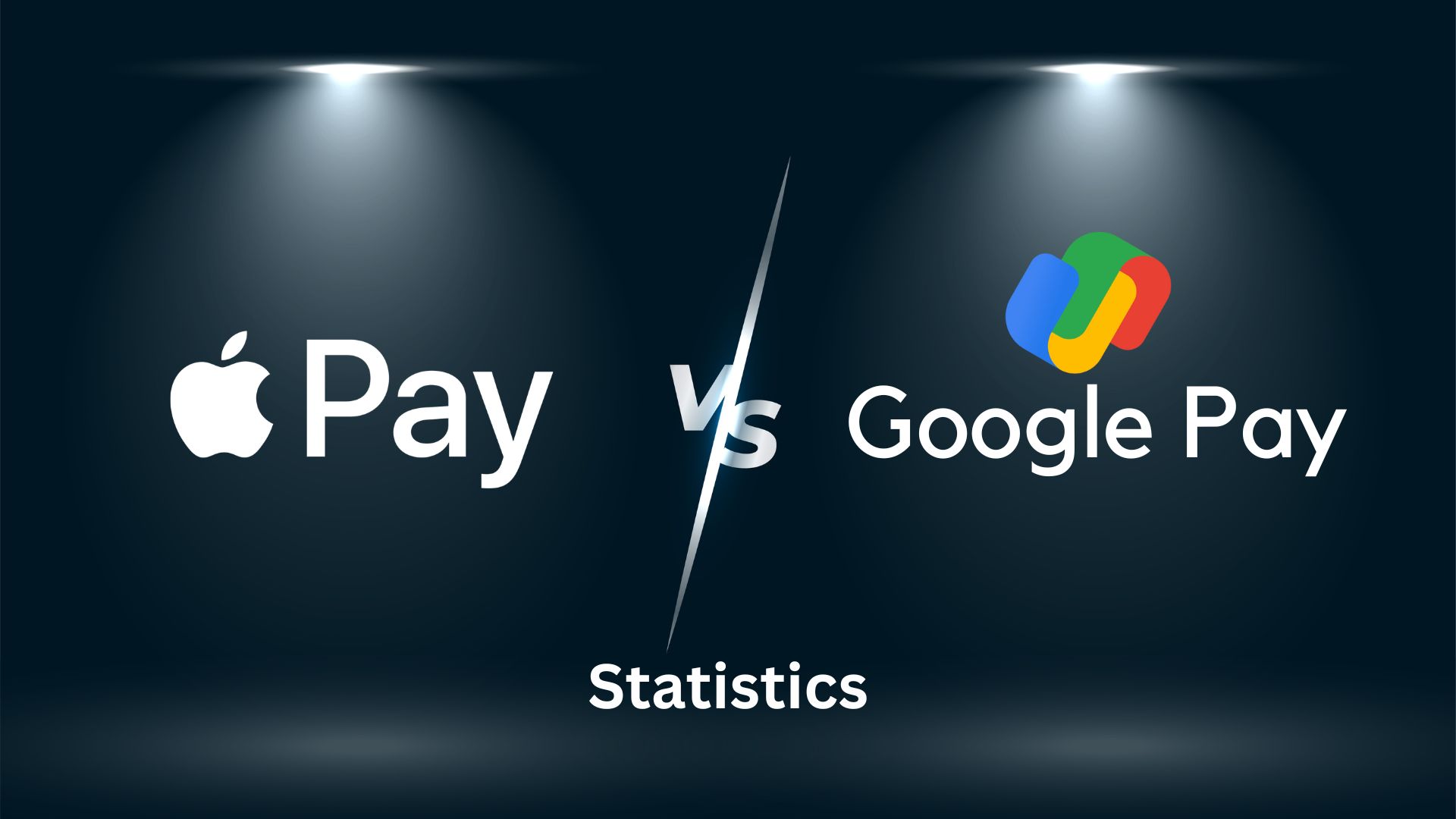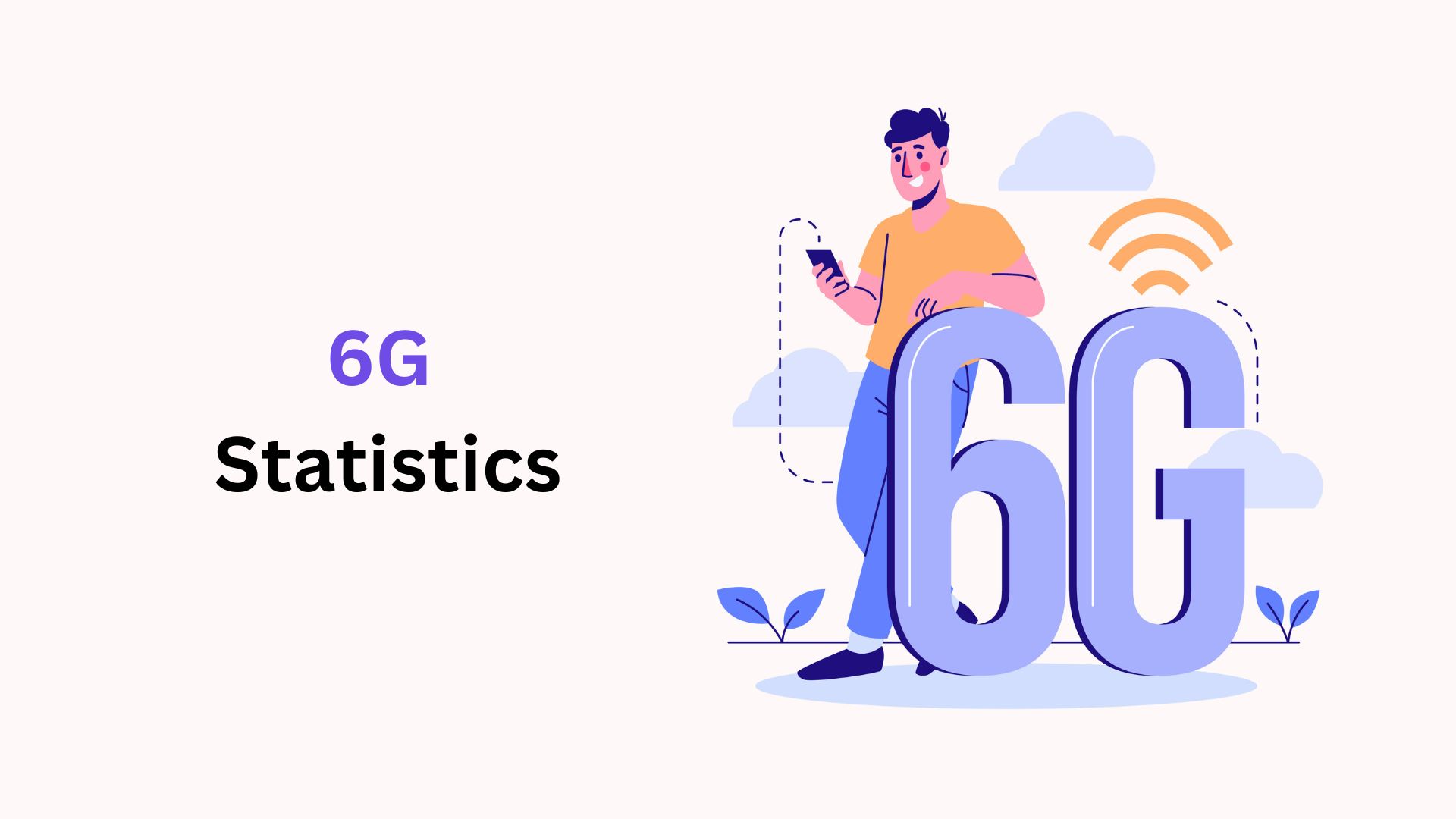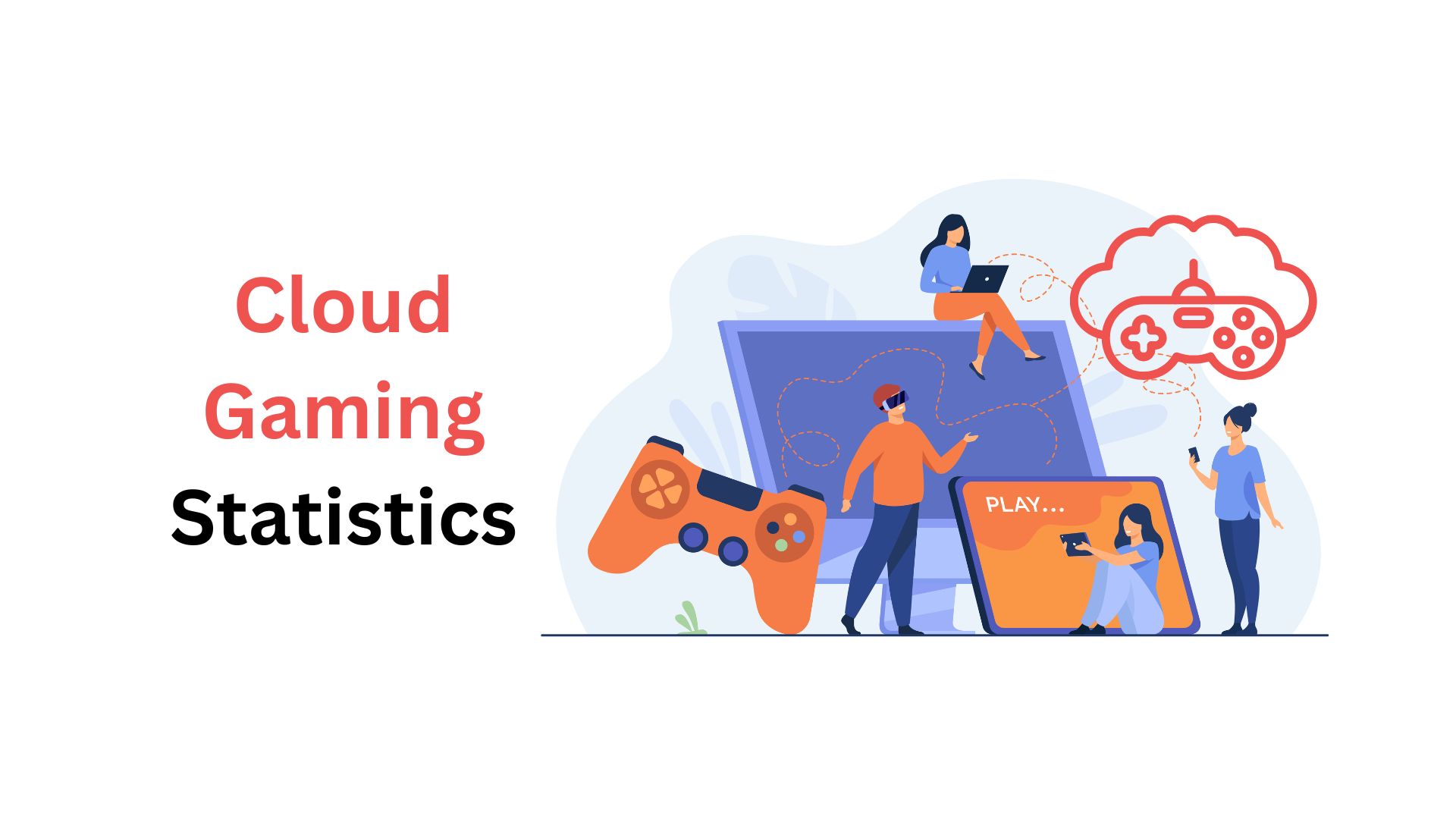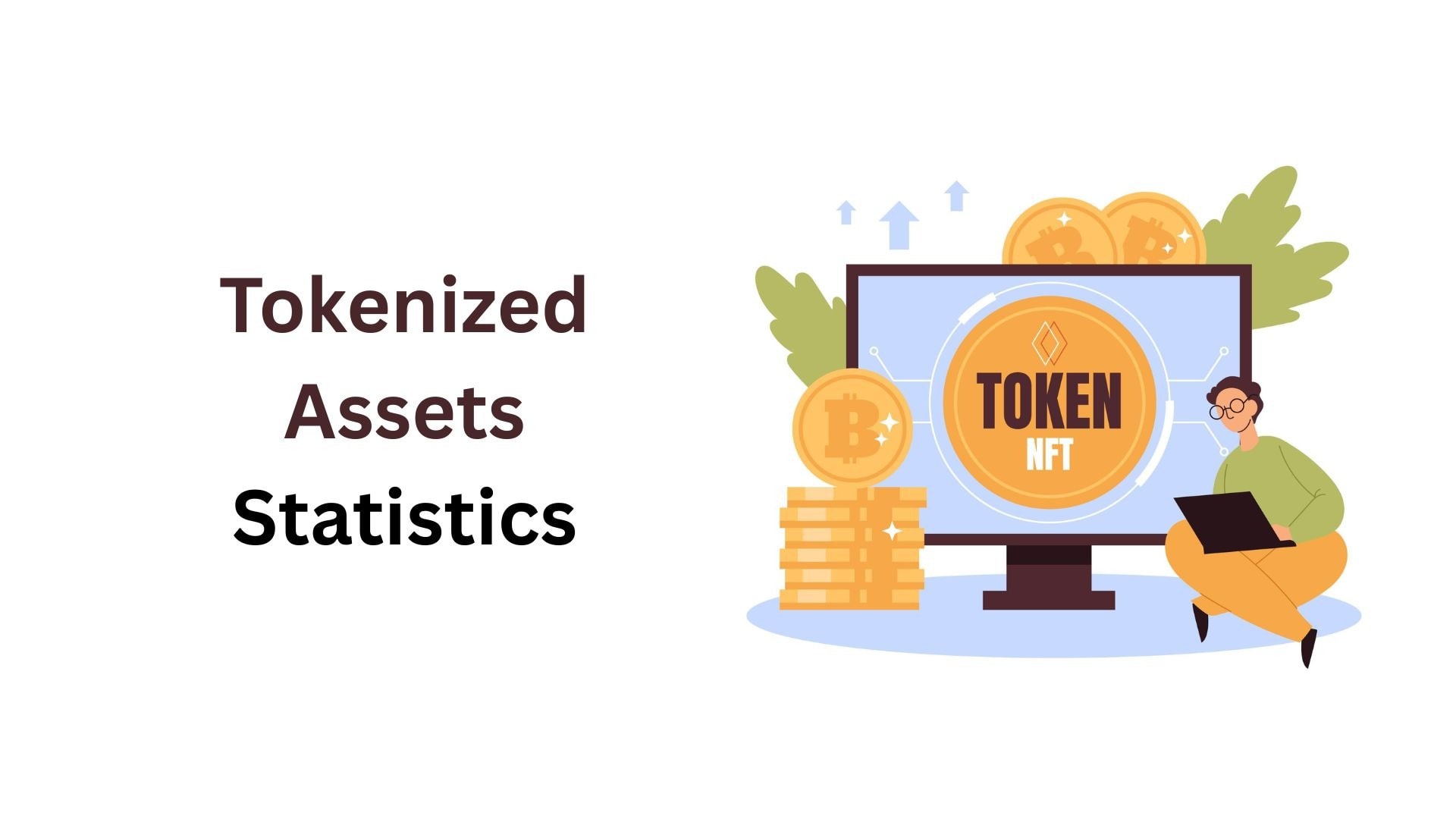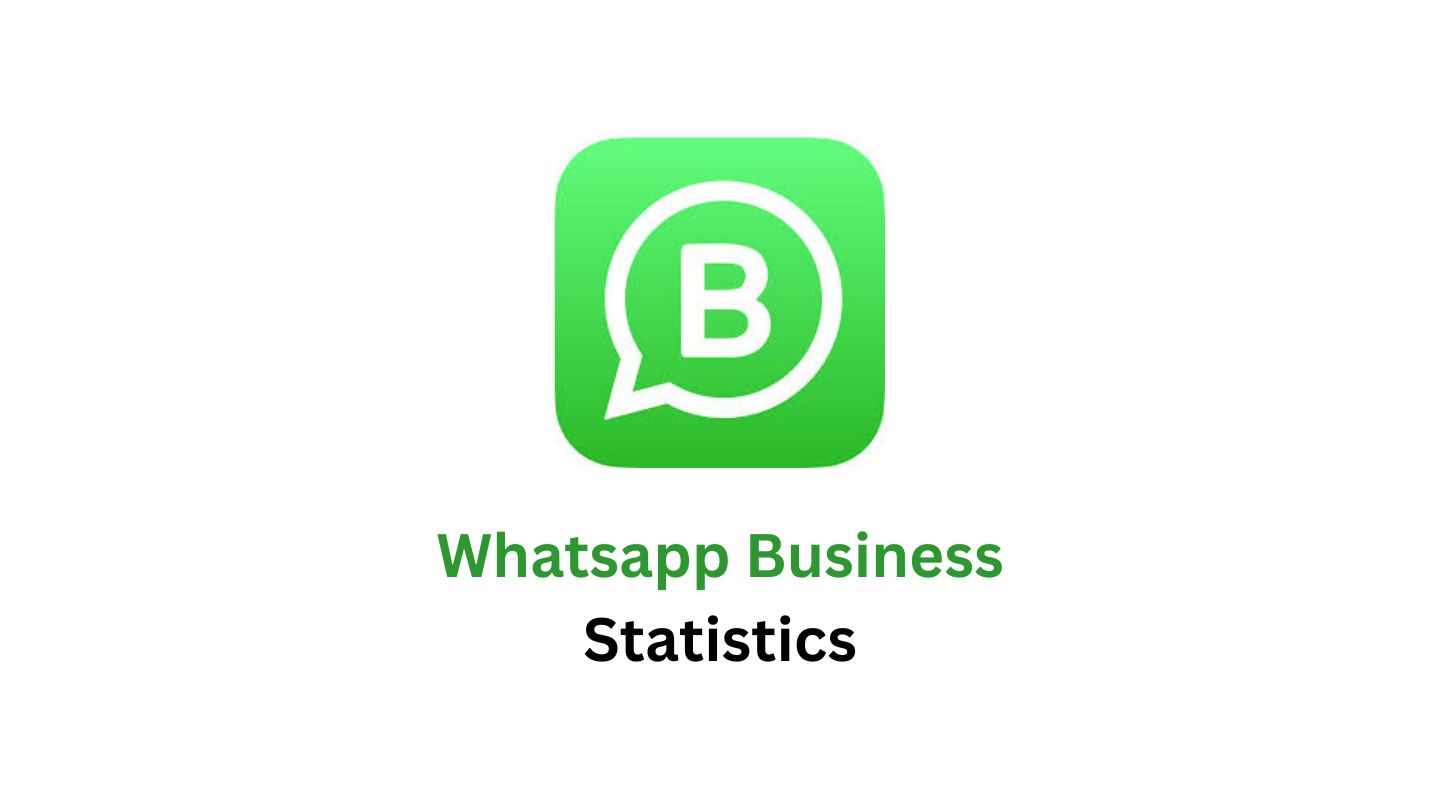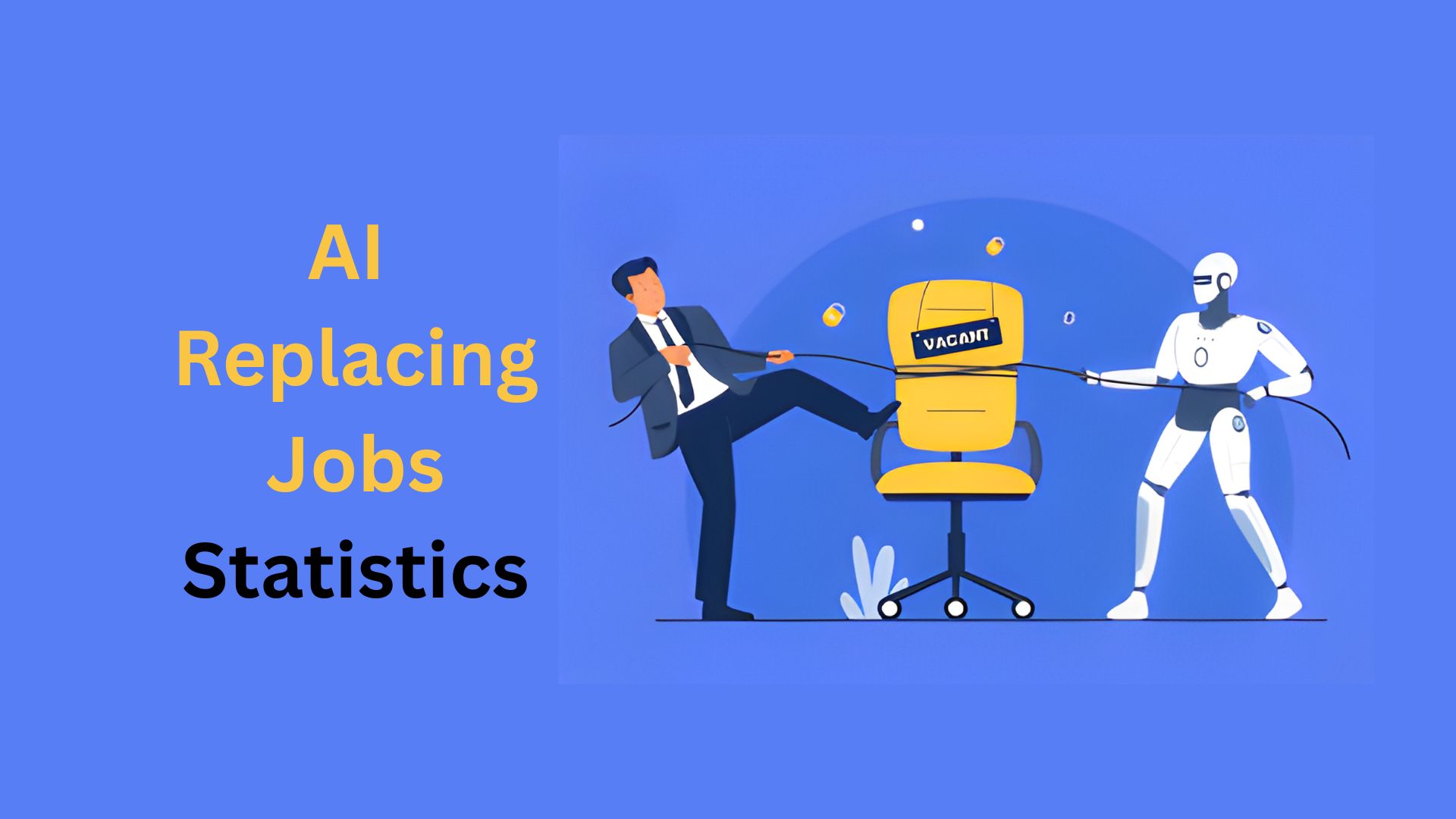Predictive AI Statistics By Market Analysis, Revenue, Applications, Use Cases, Challenges, Trends And Facts (2025)
Updated · Nov 27, 2025

Table of Contents
- Introduction
- Editor’s Choice
- General Predictive AI Statistics
- Predictive AI Market Size Analysis
- Predictive AI Market Statistics in the United States
- Predictive AI Market Revenue by Segments
- Predictive AI Integration Facts
- Predictive AI Applications Statistics
- Predictive AI Statistics in Marketing
- In the Media And Entertainment Segment
- How Predictive AI Improves Data Analysis Processes?
- Tasks Easily Automated by Machines
- Use Cases of Predictive AI Statistics
- Key Challenges in Adopting Predictive AI
- The Working Process of Predictive AI
- Top Predictive Analytics Tools
- Conclusion
Introduction
Predictive AI Statistics: Predictive AI, or Predictive Artificial Intelligence, uses advanced computer programs to analyse historical data. By looking at what has happened before, one can guess what might happen next. Many industries use it to spot trends, find possible problems early, and make better decisions. Industries such as finance, healthcare, marketing, and operations use these tools to plan more effectively and respond faster.
Because predictive AI learns from past data, it keeps improving as new data comes in. For businesses that want to stay ahead, this technology can boost efficiency, reduce risk, and create better customer experiences. This article explains the basics of predictive AI, the main techniques behind it, and how it is shaping industries today.
Editor’s Choice
- The global Predictive AI market is estimated to reach USD 22.1 billion by the end of 2025, according to market.us.
- According to Precedence Research, in 2024, North America accounted for 46% of total revenue, while large enterprises accounted for 59%.
- By 2025, the U.S. Predictive Analytics market is expected to reach USD 5.63 billion.
- A DemandSage report found that nearly 95% of businesses now use predictive AI to understand customers and improve marketing efforts.
- As of 2025, the Predictive AI market is expected to reach 6.6 billion USD for on-premises solutions and 15.5 billion USD for cloud-based options.
- Around 95% of companies use AI predictive analytics in their marketing, and 44% have fully integrated these tools.
- By using smart document automation, EY has saved about 250,000 hours of work.
- Approximately 51% marketers focus on customer-level predictions of future behaviour.
- A major rise in the use of predictive analytics has led around 77% of financial institutions to rely on it, up from 37% the previous year.
- Predictive AI with Big Data helps organisations analyse huge datasets more efficiently, with 57% attention.
- The biggest challenge companies face in adopting Predictive AI is having overwhelmed data scientists (42%).
General Predictive AI Statistics
- According to market.us, Google plans to invest USD 100 billion in safe AI projects for health and security.
- SoftBank invested USD 3.5 billion in predictive AI startups, and Sequoia invested heavily in PreCog’s company growth.
- Big Data and AI technologies now help companies analyse large amounts of data quickly, accounting for 57% of overall attention.
- Predictable physical tasks are the easiest to automate, receiving a high 78% focus.
- In marketing, 51% of their efforts go into predicting customer behaviour to create personalised strategies.
- Even with better consumer data, over 4 in 5 marketing leaders still find data-based decisions difficult.
- However, 40% find that manual data science is too costly.
- By 2025, almost 50% of healthcare providers will likely use predictive AI to improve care, spot outbreaks early, and plan treatments.
- By 2026, 45% of supply chains will use AI to predict needs and save money.
- A DemandSage report found that nearly 95% of businesses now use predictive AI to understand customers and improve marketing efforts.

- The chart shows that 80% of businesses use predictive AI, while the remaining 20% still operate without any AI tools.
- Its accuracy often ranges from 80% to 95%, but mistakes still occur.
Predictive AI Market Size Analysis
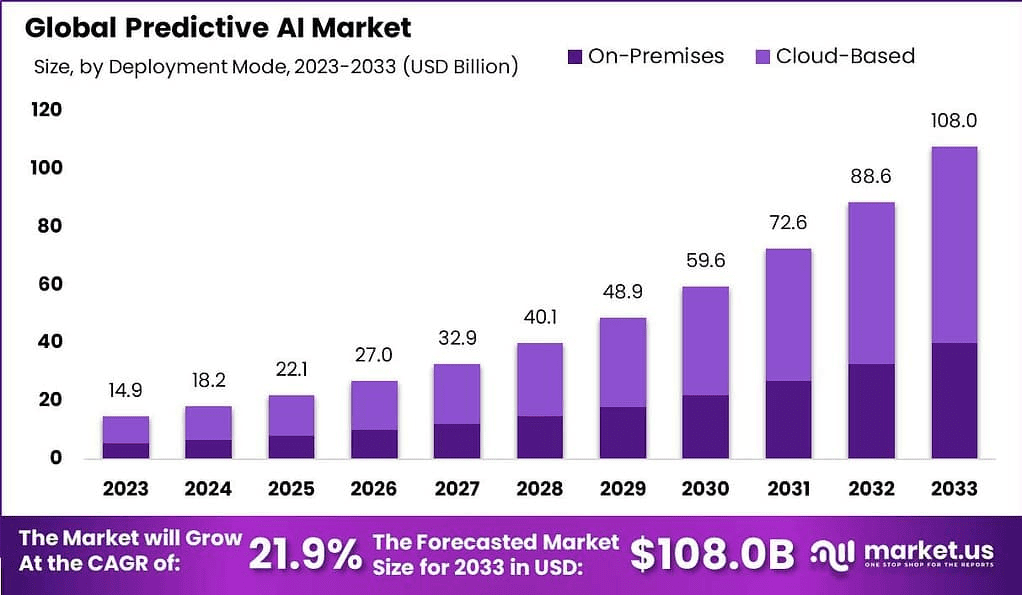
(Source: market.us)
- The global Predictive AI market is estimated to reach around USD 22.1 billion by the end of 2025.
- Furthermore, the market size in the coming years is estimated at USD 27 billion in 2026, USD 32.9 billion in 2027, USD 40.1 billion in 2028, USD 48.9 billion in 2029, USD 59.6 billion in 2030, USD 72.6 billion in 2031, USD 88.6 billion in 2032, and USD 108 billion in 2033.
- The market will grow at a CAGR of 21.9% from 2025 to 2033.
- According to Precedence Research, in 2024, North America accounted for 46% of total revenue, while large enterprises accounted for 59%.
- The solutions category also held a strong position, accounting for 63% of revenue.
- Besides, the Asia Pacific region is expected to grow at a 23.4% CAGR from 2025 to 2034, and the BFSI sector may expand at a 15.9% CAGR during the same period.
By Region

(Source: precedenceresearch.com)
- In 2024, North America held the largest share of the Predictive AI market at 46%, while Europe accounted for 25%.
- The remaining share came from the Asia Pacific (19%), Latin America (7%), and the Middle East & Africa (3%).
By Enterprise Size
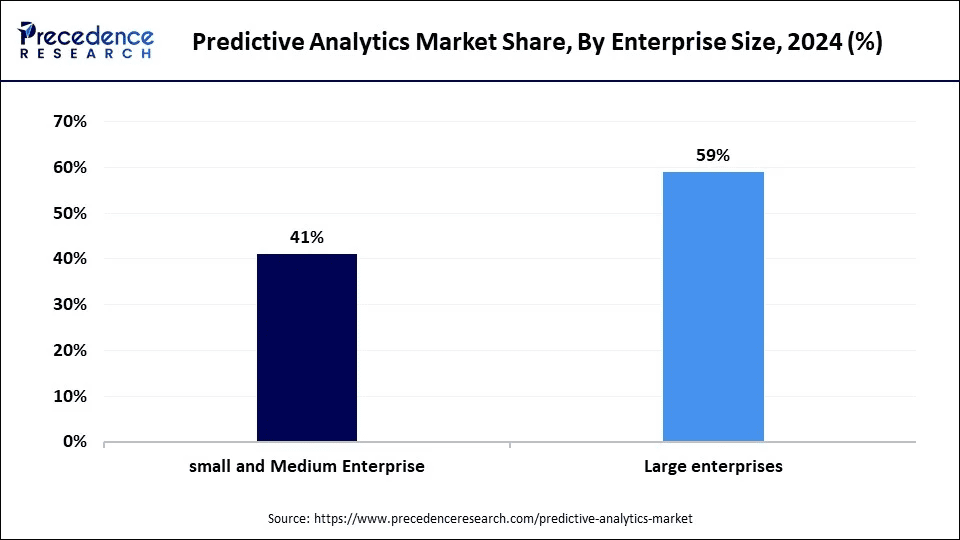
(Source: precedenceresearch.com)
- In 2024, large enterprises made up 59% of the predictive analytics market.
- Meanwhile, small and medium-sized businesses covered the remaining 41%.
Predictive AI Market Statistics in the United States

(Source: precedenceresearch.com)
- By 2025, the U.S. Predictive Analytics market is expected to reach USD 5.63 billion and grow at 21.61% annually until 2034, reaching about USD 32.85 billion.
- The predictive analytics market is expected to reach USD 6.84 billion in 2026, USD 8.30 billion in 2027, USD 10.08 billion in 2028, USD 12.24 billion in 2029, USD 14.85 billion in 2030, USD 18.03 billion in 2031, USD 21.89 billion in 2032, and USD 26.57 billion in 2033.
Predictive AI Market Revenue by Segments
- According to the Demand Sage report in 2025, the Predictive AI market is expected to reach 6.6 billion USD for on-premises solutions and 15.5 billion USD for cloud-based options.
Furthermore, other segmental revenue of the Predictive AI Market is estimated in the table below:
|
Year |
On-Premise | Cloud-Based |
|
(USD billion) |
||
|
2026 |
8.1 | 18.9 |
| 2027 | 9.8 |
23.1 |
|
2028 |
11.8 | 28.3 |
| 2029 | 14.2 |
34.7 |
|
2030 |
17 | 42.6 |
| 2031 | 20.4 |
52.2 |
|
2032 |
24.5 | 64.1 |
| 2033 | 29.4 |
78.6 |
Predictive AI Integration Facts
- According to scoop.market.us, many marketers know that consumer data is important for predicting purchases and retaining customers, yet over 4 out of 5 leaders still struggle to make data-driven decisions.
- About 84% say their attempts to predict customer behaviour feel uncertain and often rely on guesswork.
- Around 95% of companies use AI predictive analytics in their marketing, and 44% have fully integrated these tools.
- However, even among fully integrated users, 90% still face daily decision-making challenges.
- These issues include slow data updates (38%), long model-building times (35%), overloaded data scientists (42%), weak alignment with marketing goals (40%), and incomplete or incorrect data (37%).
Predictive AI Applications Statistics
- In recent years, by using smart document automation, EY has saved about 250,000 hours of work.
- PepsiCo now moves around 4,300 workdays each year, from simple tasks to more important work, by using predictive AI for inventory.
- Amadeus also uses predictive AI to handle nearly 100,000 transactions per second.
Predictive AI Statistics in Marketing
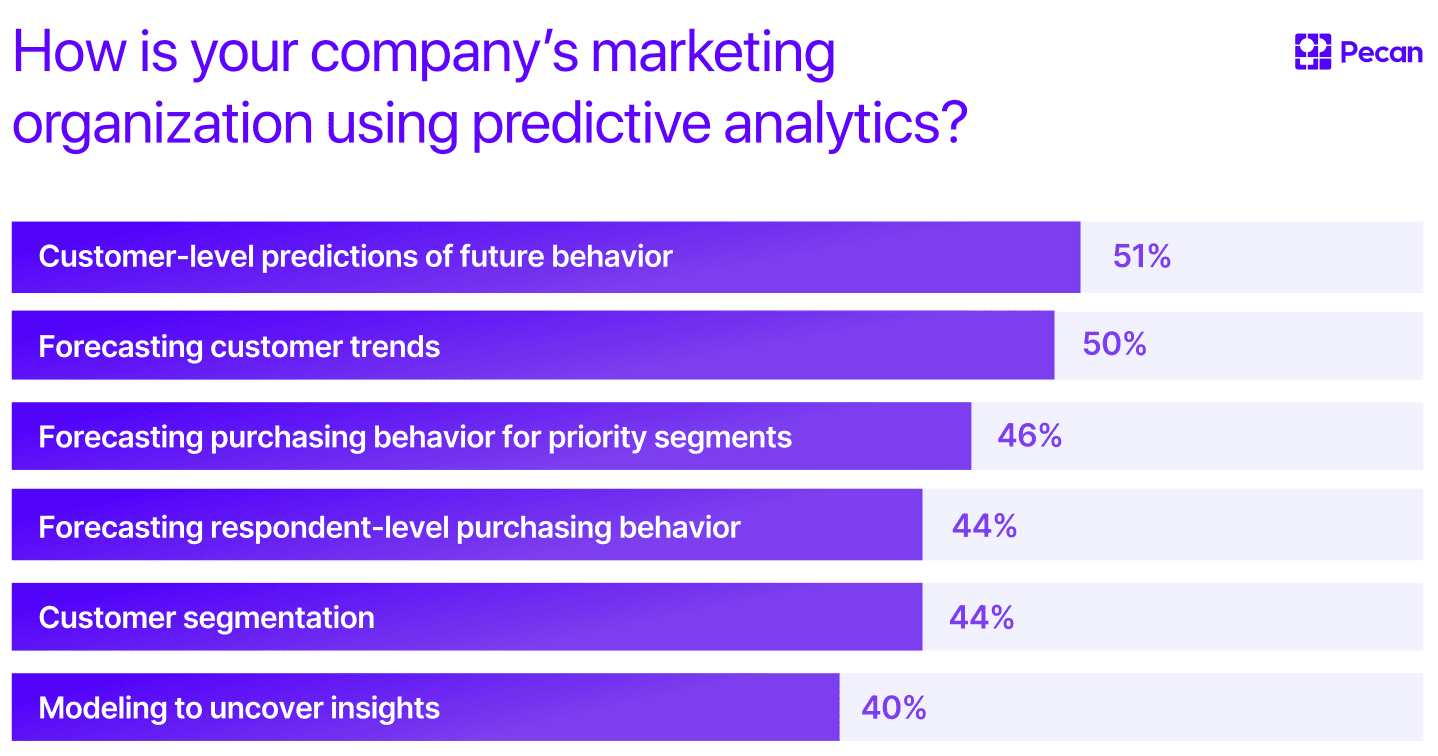
(Source: pecan.ai)
- Approximately 51% marketers focus on customer-level predictions of future behaviour.
- Moreover, 50% use it to forecast customer trends.
- Many organisations use predictive tools to forecast key customer group purchases (46%) and respondents’ buying behaviour (44%).
- Additionally, 44% use it for customer segmentation, while 40% apply modelling to uncover insights that guide their marketing strategies.
In the Finance Segment
- According to numberanalytics.com, a major rise in the use of predictive analytics has led around 77% of financial institutions to rely on it, up from 37% the previous year.
- Around 89% of financial leaders also believe that predictive analytics skills are crucial to their company’s success.
- Meanwhile, organisations that began using predictive analytics achieved returns on investment ranging from 200% to 500% in the first year.
- The advanced predictive AI increased fraud-detection accuracy by 60%.
- Because of this improvement, the financial sector now saves nearly USD 15 billion each year by preventing fraud.
In the Media And Entertainment Segment
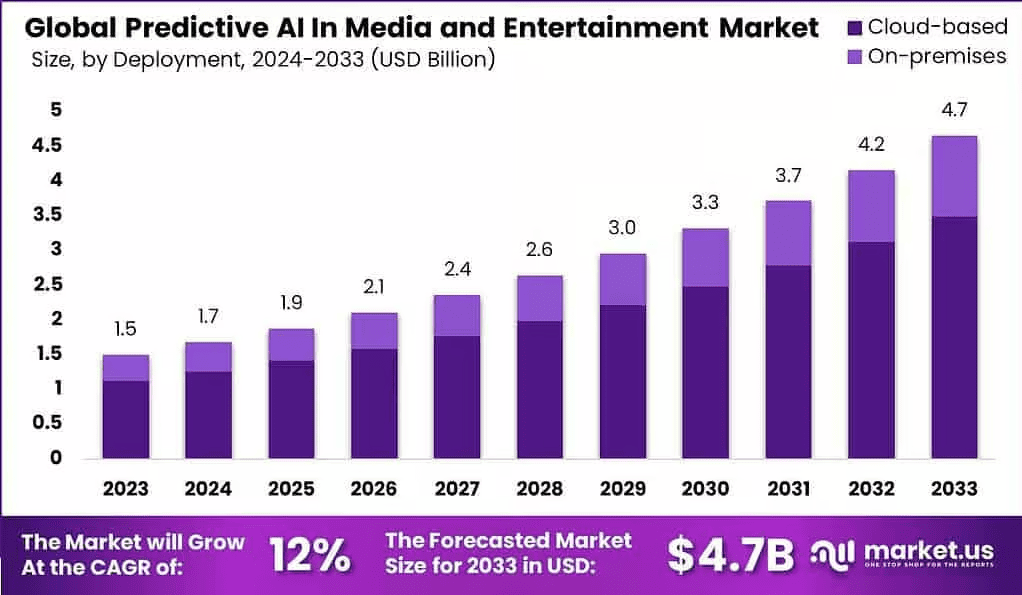
(Source: Market.us)
- As of 2025, the global market for predictive AI in media and entertainment is estimated to reach USD 1.9 billion and USD 4.7 billion by the end of 2033, along with a CAGR of 12% from 2025 to 2033.
- In the coming years, the market size is expected to reach around USD 2.1 billion in 2026, followed by USD 2.4 billion (2027), USD 2.6 billion (2028), USD 3 billion (2029), USD 3.3 billion (2030), USD 3.7 billion (2031), and USD 4.2 billion (2032).
The table below presents the segmental analysis of the Media and Entertainment Segment.
|
Year |
On-Premise | Cloud-Based |
|
(USD billion) |
||
|
2026 |
2.1 | 1.3 |
| 2027 | 2.4 |
1.5 |
|
2028 |
2.6 | 1.6 |
| 2029 | 3 |
1.8 |
|
2030 |
3.3 | 2 |
| 2031 | 3.7 |
2.3 |
|
2032 |
4.2 | 2.7 |
| 2033 | 4.7 |
3 |
How Predictive AI Improves Data Analysis Processes?
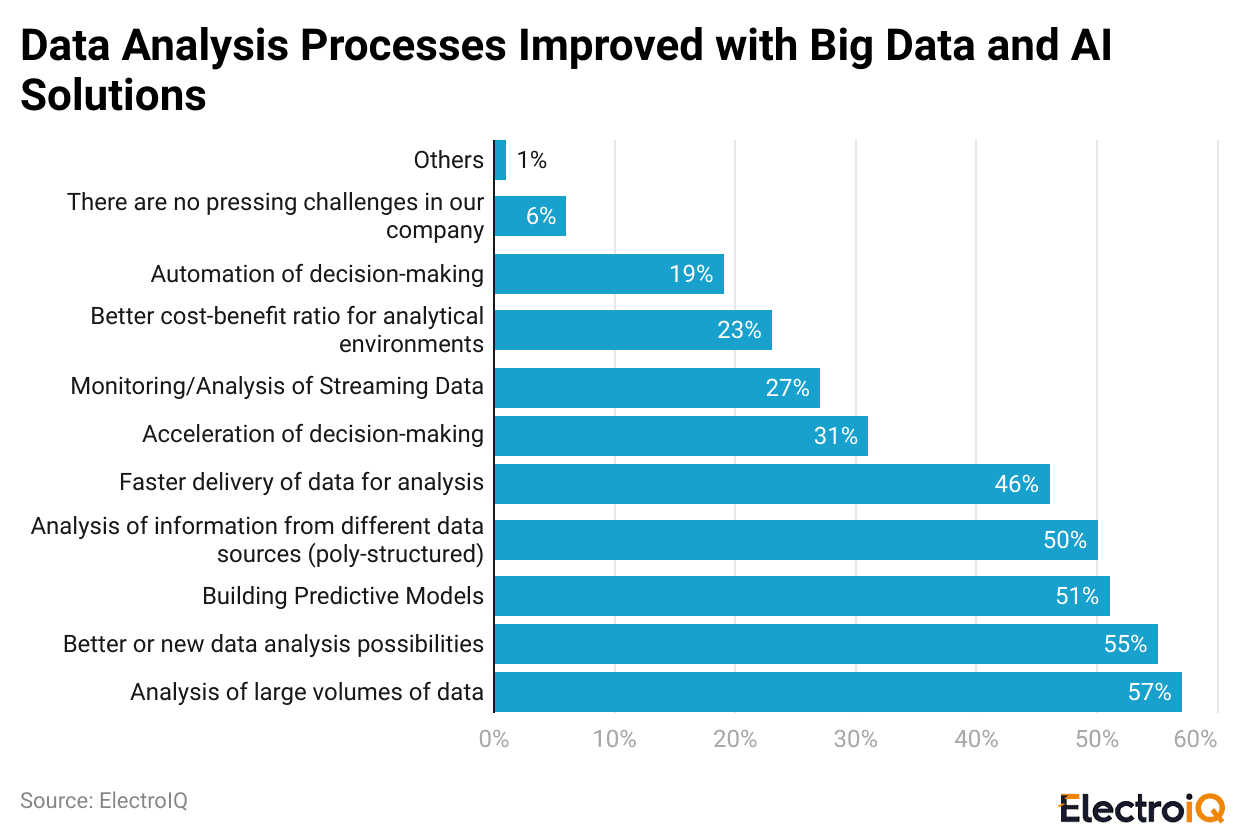
(Reference: scoop.market.us)
- Predictive AI with Big Data helps organisations analyse huge datasets more efficiently, with 57% attention.
- They also open new opportunities for analysis that were once impossible, drawing 55% focus.
- Around 51% of organisations use these technologies to build predictive models.
- Analysing data from many different sources, including polystructured data, has become easier and is now at 50%.
- These solutions also speed up data delivery (46%) and help decisions happen faster (31%).
- Monitoring streaming data grew to 27%, while better cost-benefit results reached 23%.
- Automated decision-making is rising by 19%, while only 6% reported no major issues, and 1% mentioned other uses.
Tasks Easily Automated by Machines

- Predictable physical work ranks the highest at 78%, followed by data processing at 69% and data collection at 64%.
- Meanwhile, unpredictable physical work accounts for 25%, while stakeholder interaction tasks account for 20%.
- Applying expertise is slightly lower at 18%, and managing others is the least automatable at only 9%.
Use Cases of Predictive AI Statistics
- In 2025, Kanerika reports that retail companies using predictive demand forecasting reduced out-of-stock rates by 21% and reduced excess inventory costs by 15%.
- Meanwhile, Electro IQ notes that about 74% of organisations now rely on AI-driven predictive analytics for choices in finance, marketing, and supply chain.
- In the insurance sector, Carmatec highlights how predictive analytics improves underwriting and fraud detection.
- At the enterprise level, Folio3 Data states that nearly 65% of companies have adopted or are testing AI and data analytics
- Finally, SuperAGI forecasts that the predictive analytics market will reach USD 22.1 billion in 2025.
Key Challenges in Adopting Predictive AI
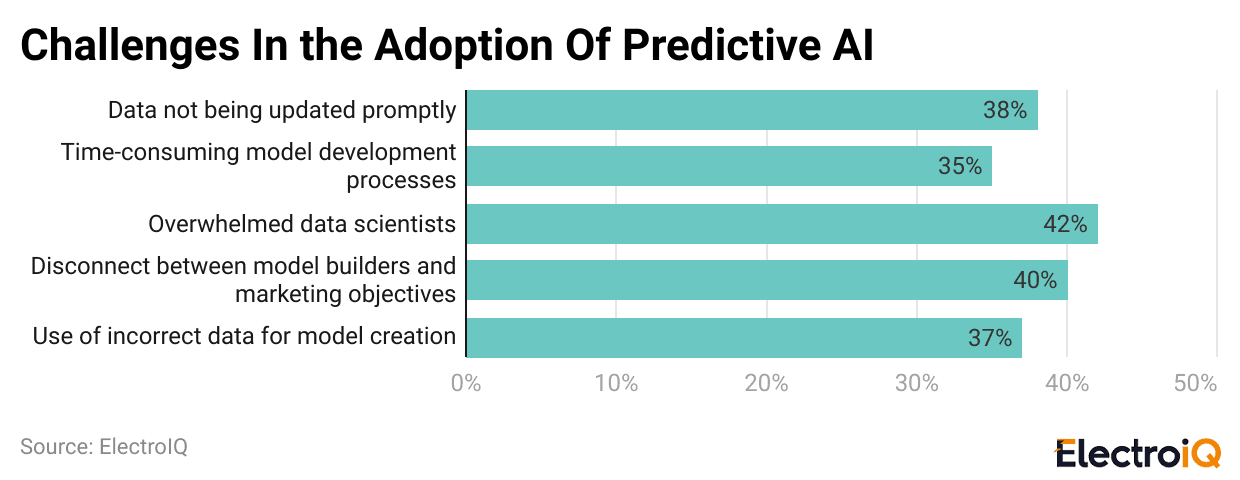
- The biggest challenge companies face in adopting Predictive AI is having overwhelmed data scientists (42%).
- The next major issue is the disconnect between model builders and marketing objectives (40%), followed by data not being updated on time (38%), use of incorrect or incomplete data (37%), and time-consuming model development processes (35%).
The Working Process of Predictive AI
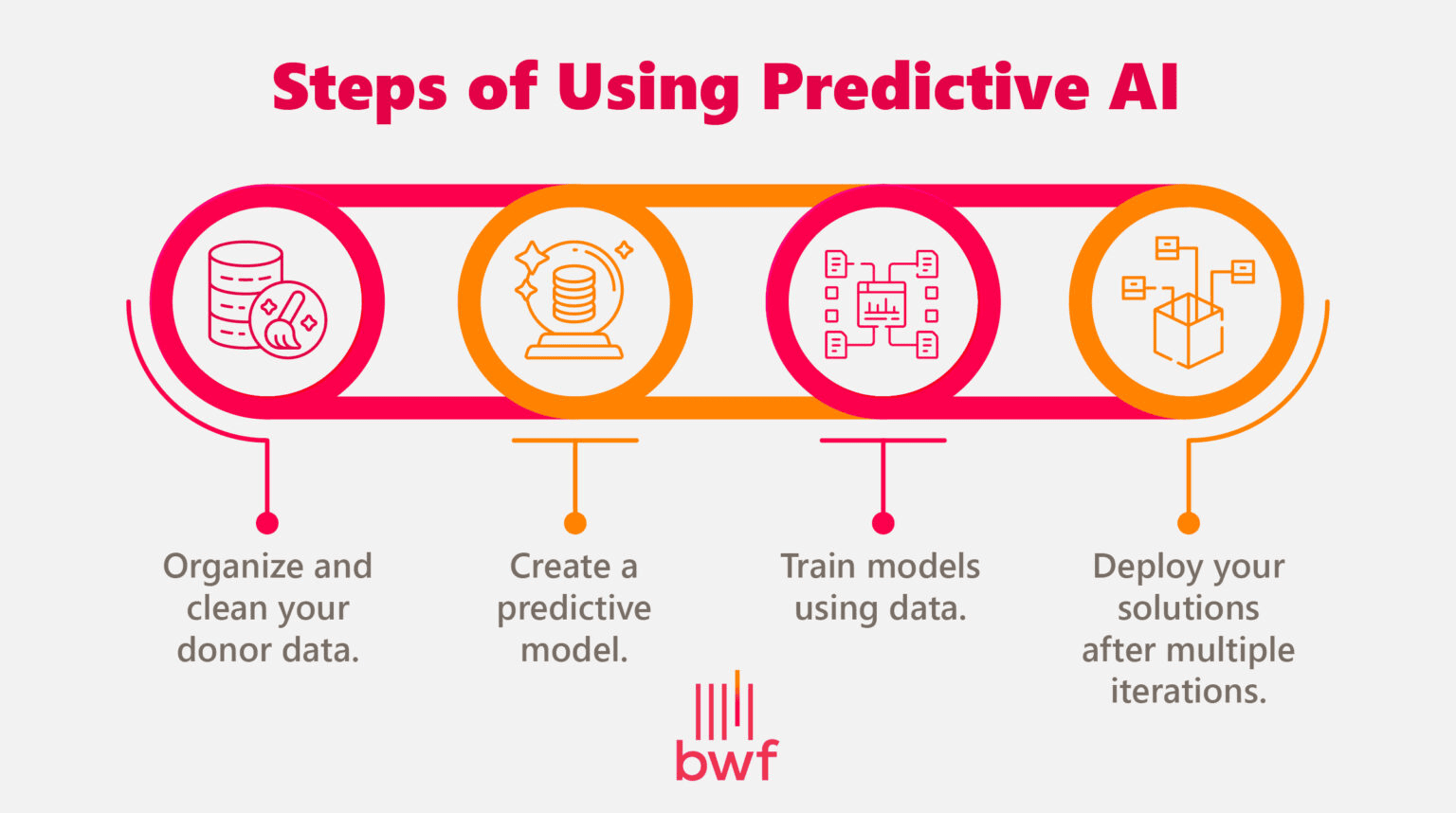
(Source: bwf.com)
- Predictive AI begins by following key steps, starting with organising and cleaning data to remove errors.
- Next, a predictive model is built from this data.
- The model is then trained using relevant information to learn patterns.
- After several rounds of testing and refinement, the final solution is deployed for real-world use.
Top Predictive Analytics Tools
- IBM Watson Studio helps teams work together by automatically cleaning data, managing AI models, and connecting to popular open-source tools.
- SAS Predictive Analytics offers robust data analysis, real-time processing, and clear visuals, making it useful across marketing, telecom, and manufacturing.
- Google Cloud AI Platform supports the full ML workflow with AutoML and BigQuery, commonly used in finance, retail, and healthcare.
- Microsoft Azure Machine Learning provides automated ML, easy Azure integration, and helpful workspaces for retail and finance.
- Tableau creates interactive dashboards and links with Python and R, giving real-time insights for sales and marketing teams.
Conclusion
Predictive AI is becoming very useful for companies and for daily life. It looks at past information to guide better decisions, reduce problems, and predict what might happen in the future. As this technology improves, its predictions will become even more reliable and helpful for planning.
Using Predictive AI carefully means confirming that the data is accurate and adhering to ethical guidelines. When applied wisely, it helps them make quicker, clearer, and more confident decisions in the future.
Sources
FAQ.
Predictive AI studies past data, finds patterns using machine learning, and uses those patterns to guess future events or outcomes.
This is primarily used in healthcare, finance, marketing, education, and many other industries.
Predictive AI focuses on using past data to forecast future outcomes, while other AI types may solve tasks, recognise patterns, or make decisions directly.
Predictive AI needs historical data, accurate records, patterns, and relevant information to make reliable predictions.
No, Predictive AI isn’t always accurate because its results depend on data quality.

Maitrayee Dey has a background in Electrical Engineering and has worked in various technical roles before transitioning to writing. Specializing in technology and Artificial Intelligence, she has served as an Academic Research Analyst and Freelance Writer, particularly focusing on education and healthcare in Australia. Maitrayee's lifelong passions for writing and painting led her to pursue a full-time writing career. She is also the creator of a cooking YouTube channel, where she shares her culinary adventures. At Smartphone Thoughts, Maitrayee brings her expertise in technology to provide in-depth smartphone reviews and app-related statistics, making complex topics easy to understand for all readers.

